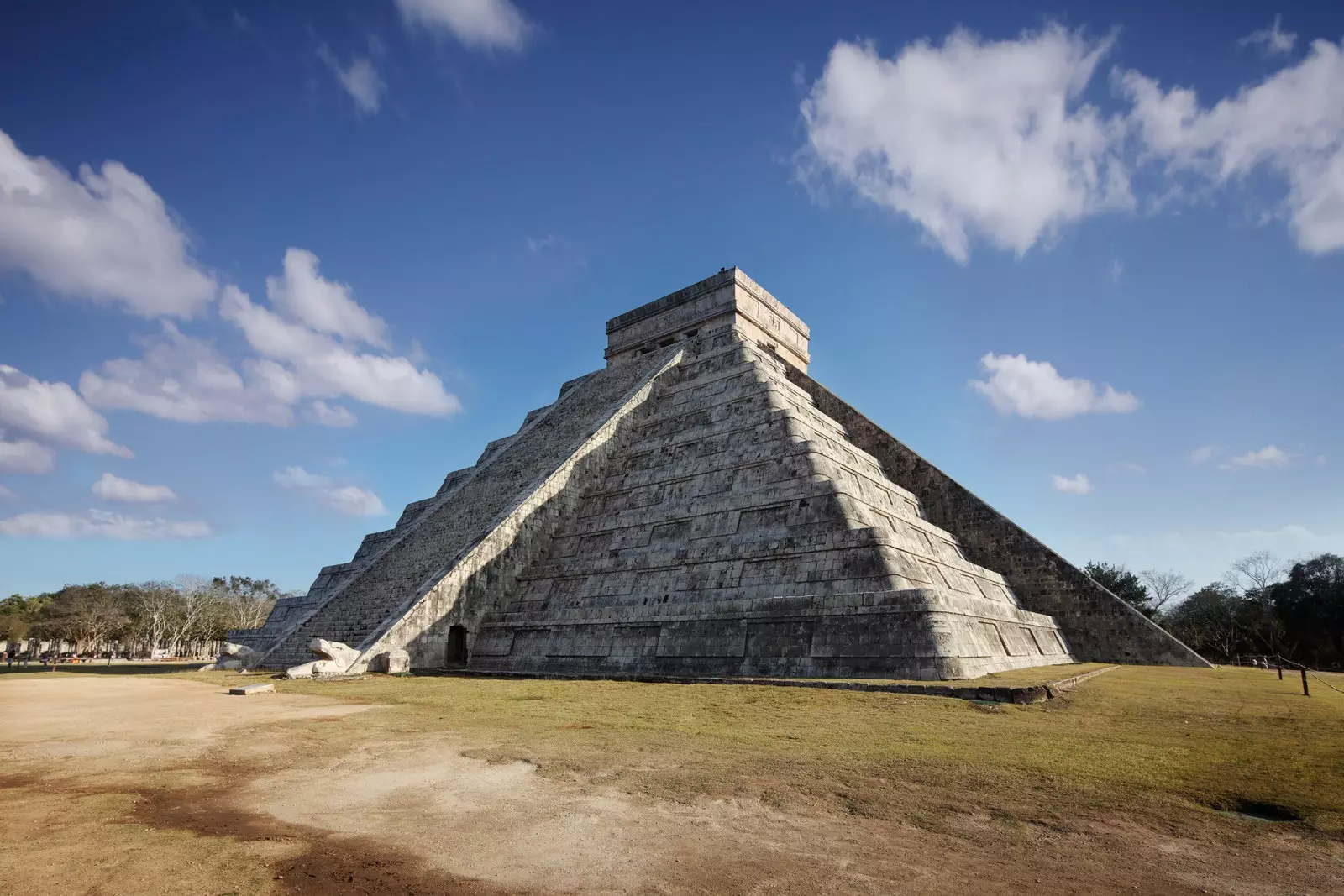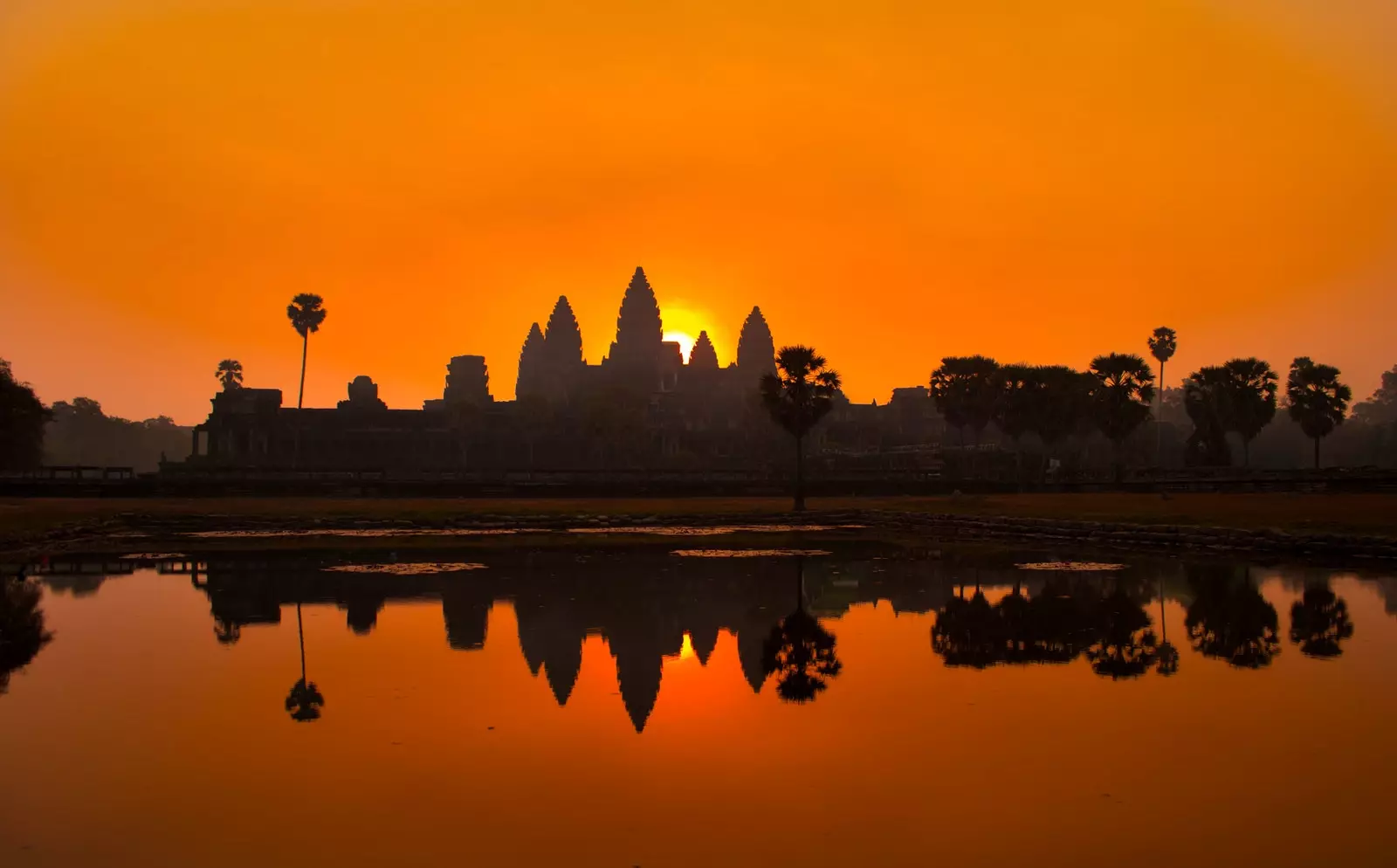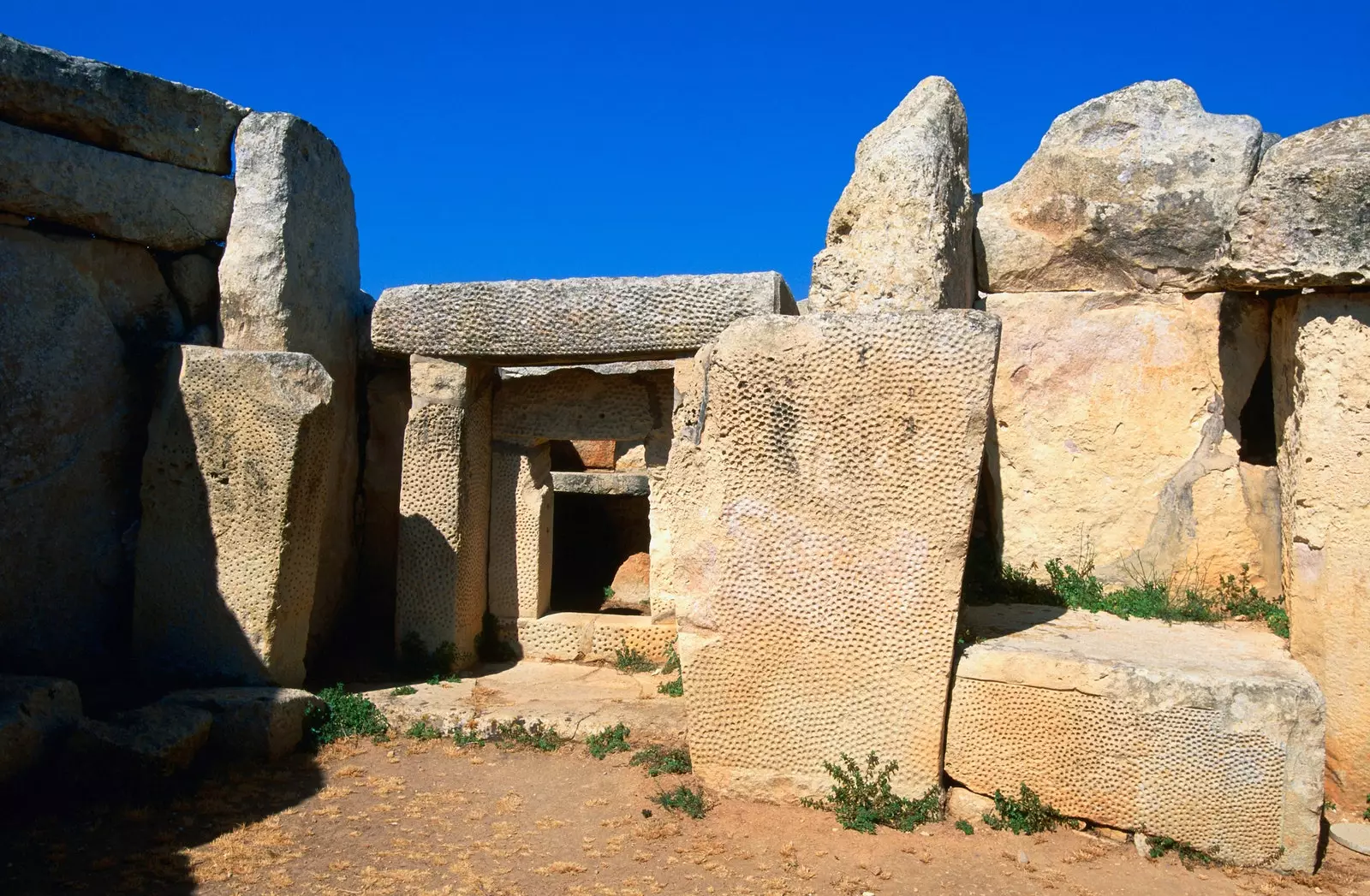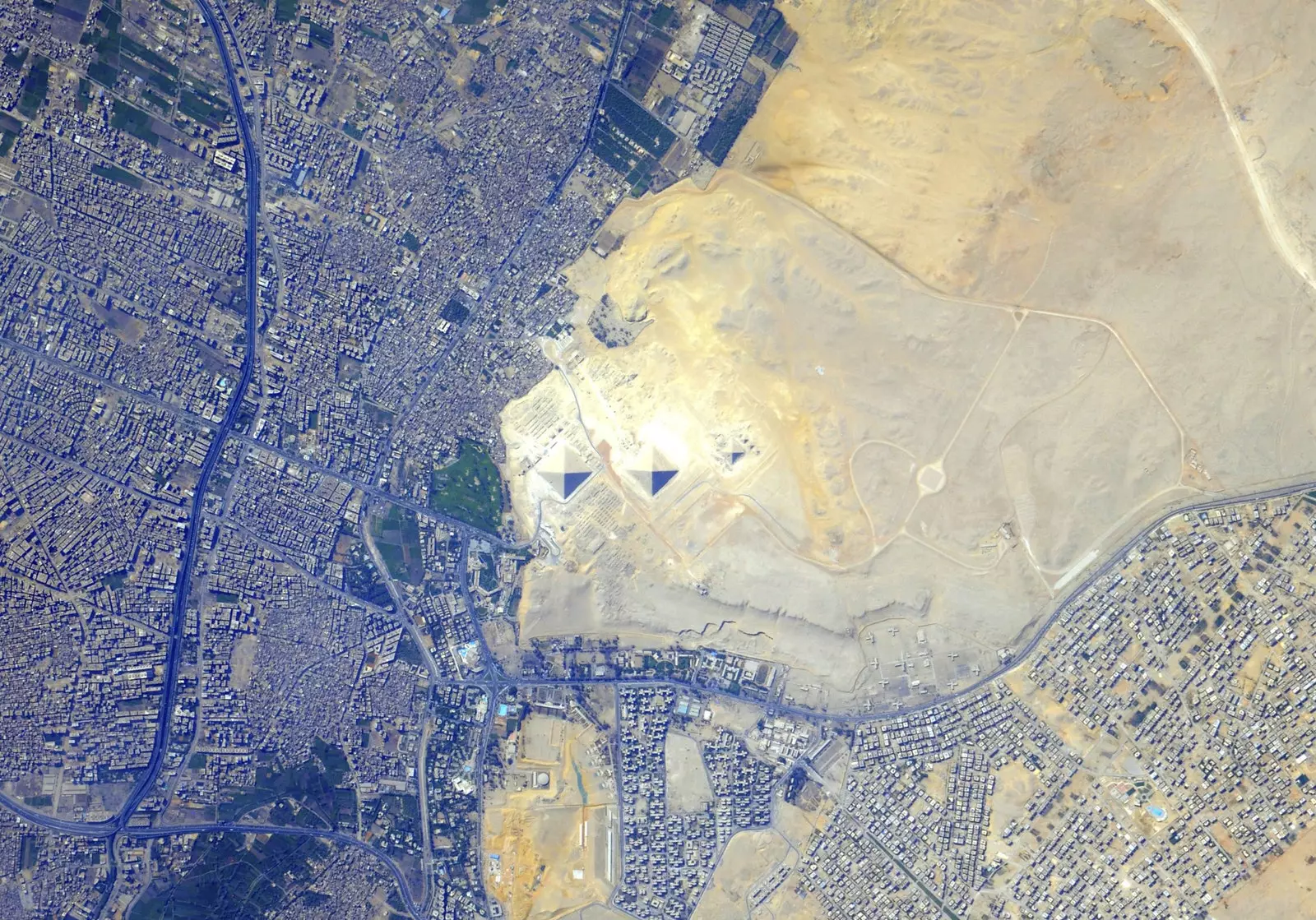
Let's welcome spring even if it's with the imagination.
Since we were little we believe we have very clear concepts such as the one that dictates that the sun rises in the east and sets in the west, but nothing is further from reality, if we look at the explanations with which astrophysicists do not stop correcting us on issues such as the instagrammable Manhattanhenge that we have already told you about.
The scientific reality hits us in the face (and in the intellect) when we discover that only twice a year, during the equinoxes –the first day of spring and the first day of autumn–, the sun rises exactly in the east and sets exactly in the west.
In summary, that during these two dates marked on the calendar, only two, night and day last exactly the same: “equal night” is the meaning of aequinoctium, a Latin word from which the word equinox is derived.
Then, due to the Earth's tilted axis of rotation and its translational motion, the star king stops appearing and hiding every day in the same place: he goes a little further south past the autumnal equinox and a little further north past the spring equinox. And not constantly.

The Earth and the Sun during their cosmic dance.
However, our ancestors were more observant, since time immemorial, they have been celebrating these two moments (or we should say moments) of the year in which the sun reached the zenith and was placed just above our heads (at an angle of 90 ° to be located in the plane of the celestial equator).
That is why the equinoxes began to be used to set the beginning of spring and autumn in each terrestrial hemisphere, since they coincided with climate changes and the agricultural cycles of the harvests.
We in the northern hemisphere this 2020 we will welcome spring during the early hours of March 20, a day marked on the calendar for astrophysical reasons, but much more for mental ones, since we are usually looking forward to good weather, abundance and the joy derived from greater exposure to sunlight (vitamin D is welcome against depression).
Under normal conditions, in order to welcome this precise date with the appropriate joy, we would invite you to travel to distant countries to participate in its massive festivals, but as we will not be able to move from home until further notice, we prefer to let your imagination run wild knowing something more about the different cultures that have focused their attention on the zenith of the sun, while discovering those places where we will one day go to welcome it to spring as it deserves.
CHICHEN ITZA, MEXICO
Next to the Pyramid of Kukulkan, built by the Mayans a thousand years ago at Chichen Itza, thousands of devotees and curious people gather every year during the vernal equinox (also during the autumn equinox) who seek to see how the famous feathered serpent descends the stairway of this temple also known as the castle.
This hierophany (manifestation of the sacred) consists in the fact that, when the sun's rays are projected parallel to the building, the balustrade of the north-northeast staircase projects the shadow of several triangles that merge with the head of a snake of stone (representing the god Kukulkan) creating the optical effect that it is crawling to the base.
A note: recent Mexican research from the National Institute of Anthropology and History assures that, although the phenomenon exists and was searched for, in reality it would have nothing to do with the equinoxes. In a study entitled Astronomical Orientations in Lowland Maya Architecture analyzed the orientation of almost 300 pre-Hispanic monumental constructions of the Yucatan and they did not find conclusive data that related their orientation to either sunrise or sunset during the equinoxes.

Descent of the plumed serpent in the Pyramid of Kukulkan during the spring equinox.
ANGKOR TEMPLES
Connecting the earth with the sky seems to have been the objective of the kings who ordered the construction between the 9th and 13th centuries Angkor temples, an earthly representation of the Hindu cosmological universe. Twice a year, during the equinox sunrise, the sun rises exactly over the top of its main temple.
You have to stand at the beginning of the bridge that leads to Angkor Wat to see how amazingly the sun rises at dawn on the central tower of the complex. A phenomenon that is repeated for three days in a row if we vary our position a little, which many archaeologists relate to the celebration of the new year of the Khmer culture, which coincides with the spring equinox and lasts three days.
A note (for another year): the Ministry of Tourism organizes a photography contest under the theme Angkor Wonder Selfie that rewards the best self-portraits taken during the equinox with the architectural ensemble in the background.

Sunrise during the equinox over the temples of Angkor.
MNAJDRA TEMPLES
Graham Hancock accurately describes in his book Underworld: The Mysterious Origins of Civilization how, when the sun reaches the horizon at the equinoxes, its rays enter through the enormous trilithon entrance of the lower temple of Mnajdra (Malta), projecting a point of light into the depths of this megalithic complex until it reaches a stone slab in the wall of a tiny sanctuary.
An astronomical, mathematical and engineering finding that seems to be ignored by orthodox archaeology, but that with its mystery attracts researchers like this British journalist, an expert in delving into scientific theories involving ancient civilizations, since if it were validated it would mean that the Mnajdra temples could have fulfilled calendrical and astronomical observation functions.
One note: in the book, Hancock also hypothesizes that in Malta there could have been a 'distinctive civilization' prior to the dated Neolithic invasion from Sicily in 5200 BC.

Trilithon in the Mnajdra temple complex, Malta.
PYRAMIDS OF GIZA
It has been the autumn equinox that has served the archaeologist Glen Dash to unravel one of the greatest mysteries of the pyramids of Giza, that of their perfect alignment, the one that makes their faces look at the cardinal points. The research, published in The Journal of Ancient Egyptian Architecture, explains that thanks to the shadows cast during this specific date of the calendar by a gnomon (measuring rod that is stuck in the ground) the Egyptians were able to draw the straight line on which they built the pyramids.
However, it is another disturbing phenomenon of shadow projection that draws onlookers to the Great Pyramid of Giza during the equinoxes. This is the 'lightning effect', a term coined last century by the Egyptologist André Pochan and published in his book The Enigma of the Great Pyramid, edited by Plaza y Janes in the 1970s.
This optical singularity, which lasts a few minutes and occurs at sunrise and sunset on both days, consists in that, when the sun's rays hit the south face of the pyramid of Cheops (which is octagonal, since its four faces have a slight inclination towards the center that makes it a kind of four-pointed star), one of its halves remains in shadow and the other appears illuminated. A perfect and fleeting bisector that satellite images have helped us to verify with greater precision.

The pyramids of Giza were built with almost perfect alignment.
